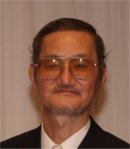|
|
Plenary
Lecture
Compositional Changes of Human Tissues and Organs with
Aging

Professor Yoshiyuki Tohno
Department of Anatomy, Faculty of Medicine
Chiang Mai University
Chiang Mai 50200, THAILAND
E-mail:
yoshiyukitohno@yahoo.co.jp
Abstract:
To elucidate compositional changes of the human tissues
and organs with aging, the authors investigated
age-related changes of elements in the blood vessels of
the arteries, veins, and thoracic duct, cardiac valves,
bones of calcaneus, talus, vertebrae, auditory ossicles,
and rib, cartilages of the intervertebral disk, xiphoid
process, costal cartilage, pubic symphysis, and medial
meniscus, ligaments of the posterior longitudinal
ligament, anterior cruciate ligament, and ligamentum
capitis femoris, tendons of the Achilles tendon, biceps
brachii muscle, diaphragm, iliopsoas muscle, and
peroneus longus muscle, nerves of the trigeminal, optic,
vagus, median, radial, ulnar, femoral, sciatic, and
common peroneal nerves, brains of the corpus callosum,
anterior commissure, pineal body, and olfactory bulb,
and organs of the prostate, uterine tube, and ureter,
and reported the results.
With regard to the arteries, we found that the
accumulation of Ca, P, and Mg did not occur uniformly in
any arteries and that there were two types of the
arteries. The first type is one that a significant
accumulation of Ca and P occurs with aging, whereas the
second type is one that an accumulation of Ca and P
hardly occurs with aging. The thoracic and abdominal
aortas, coronary, common carotid, splenic, common iliac,
internal iliac, external iliac, uterine, internal
pudendal, femoral, popliteal, posterior tibial, and
dorsalis pedis arteries belonged to the first type,
whereas the internal thoracic, cerebral, pulmonary,
axillary, brachial, radial, ulnar, and obturator
arteries belonged to the second type.
In addition, we found that the accumulation of Ca and P
was accompanied by increase of Mg and decrease of S in
most, but not all of human arteries.
In the present conference, we present mainly the
compositional changes of the arteries of the coronary
and uterine arteries and brains of the corpus callosum,
and olfactory bulb and tract with aging.
|
|
